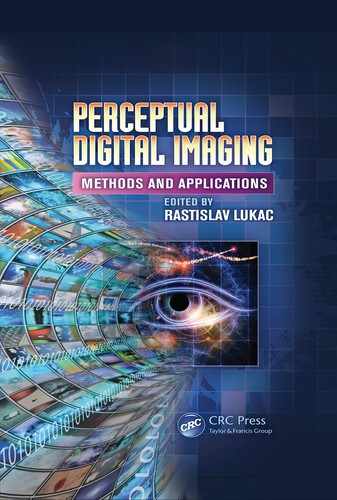Book Description
Visual perception is a complex process requiring interaction between the receptors in the eye that sense the stimulus and the neural system and the brain that are responsible for communicating and interpreting the sensed visual information. This process involves several physical, neural, and cognitive phenomena whose understanding is essential to design effective and computationally efficient imaging solutions. Building on advances in computer vision, image and video processing, neuroscience, and information engineering, perceptual digital imaging greatly enhances the capabilities of traditional imaging methods.
Filling a gap in the literature, Perceptual Digital Imaging: Methods and Applications comprehensively covers the system design, implementation, and application aspects of this emerging specialized area. It gives readers a strong, fundamental understanding of theory and methods, providing a foundation on which solutions for many of the most interesting and challenging imaging problems can be built.
The book features contributions by renowned experts who present the state of the art and recent trends in image acquisition, processing, storage, display, and visual quality evaluation. They detail advances in the field and explore human visual system-driven approaches across a broad spectrum of applications, including:
- Image quality and aesthetics assessment
- Digital camera imaging
- White balancing and color enhancement
- Thumbnail generation
- Image restoration
- Super-resolution imaging
- Digital halftoning and dithering
- Color feature extraction
- Semantic multimedia analysis and processing
- Video shot characterization
- Image and video encryption
- Display quality enhancement
This is a valuable resource for readers who want to design and implement more effective solutions for cutting-edge digital imaging, computer vision, and multimedia applications. Suitable as a graduate-level textbook or stand-alone reference for researchers and practitioners, it provides a unique overview of an important and rapidly developing research field.
Table of Contents
- Cover
- Half Title
- Title Page
- Copyright Page
- Dedication
- Table of Contents
- Preface
- The Editor
- Contributors
- 1 Characteristics of Human Vision
- 2 An Analysis of Human Visual Perception Based on Real-Time Constraints of Ecological Vision
- 3 Image and Video Quality Assessment: Perception, Psychophysical Models, and Algorithms
- 4 Visual Aesthetic Quality Assessment of Digital Images
- 5 Perceptually Based Image Processing Algorithm Design
- 6 Joint White Balancing and Color Enhancement
- 7 Perceptual Thumbnail Generation
- 8 Patch-Based Image Processing: From Dictionary Learning to Structural Clustering
- 9 Perceptually Driven Super-Resolution Techniques
- 10 Methods of Dither Array Construction Employing Models of Visual Perception
- 11 Perceptual Color Descriptors
- 12 Concept-Based Multimedia Processing Using Semantic and Contextual Knowledge
- 13 Perceptually Driven Video Shot Characterization
- 14 Perceptual Encryption of Digital Images and Videos
- 15 Exceeding Physical Limitations: Apparent Display Qualities
- Index
